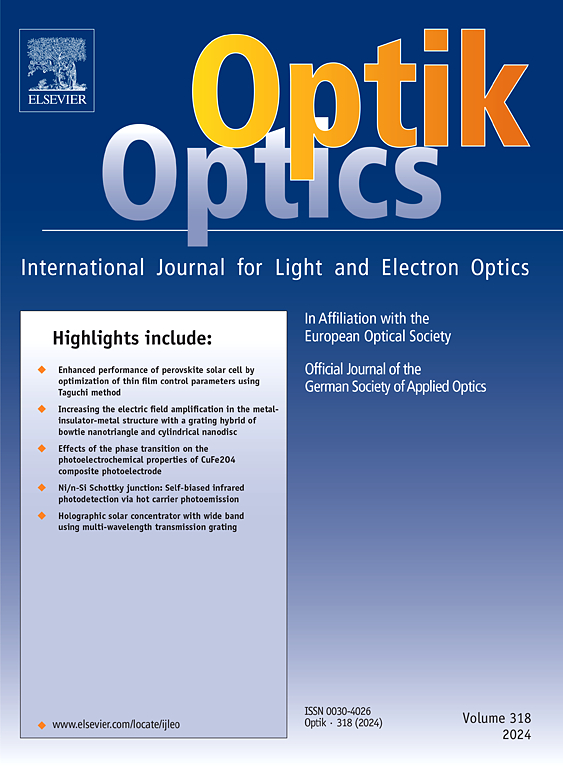Performance specific recipe for nano-Co3O4 based electrochromic electrodes: Optimizing color modulation parameters
IF 3.1
3区 物理与天体物理
Q2 Engineering
引用次数: 0
Abstract
The development of smart windows requires highly efficient electrochromic electrodes with fast response time and high optical modulation hence material synthesis parameters need to be optimized to get a material to give best possible performance. In this work, a set of Co3O4 films was prepared by electrodeposition in a constant current mode where the concentration of NaNO3 and annealing temperatures were kept as variables. All the Co3O4 films exhibited noticeable bias induced color modulation from yellow to brown, which is characterized using bias-dependent in-situ transmission spectroscopy. An optical-modulation of 64 % (at 650 nm) could get observed for the Co3O4 films prepared using 0.05 M NaNO3 and annealed at 250 °C. A very fast response time of 2.2 s/1 s for switching from colored to bleached state and vice versa. The coloration efficiency was 58.9 cm2/C for Co3O4 films synthesized using 0.05 M NaNO3 and annealed at 150 °C, due to the electrode's highly porous nature. These enhancements make cobalt oxide electrodes a suitable choice as an anodic electrode for designing solid-state electrochromic devices in real-life applications. A recipe for designing a performance based electrochromic smart film has been obtained based on the correlation between the deposition parameter and their electrochromic performance.
求助全文
约1分钟内获得全文
求助全文
来源期刊

Optik
物理-光学
CiteScore
6.90
自引率
12.90%
发文量
1471
审稿时长
46 days
期刊介绍:
Optik publishes articles on all subjects related to light and electron optics and offers a survey on the state of research and technical development within the following fields:
Optics:
-Optics design, geometrical and beam optics, wave optics-
Optical and micro-optical components, diffractive optics, devices and systems-
Photoelectric and optoelectronic devices-
Optical properties of materials, nonlinear optics, wave propagation and transmission in homogeneous and inhomogeneous materials-
Information optics, image formation and processing, holographic techniques, microscopes and spectrometer techniques, and image analysis-
Optical testing and measuring techniques-
Optical communication and computing-
Physiological optics-
As well as other related topics.
 求助内容:
求助内容: 应助结果提醒方式:
应助结果提醒方式:


